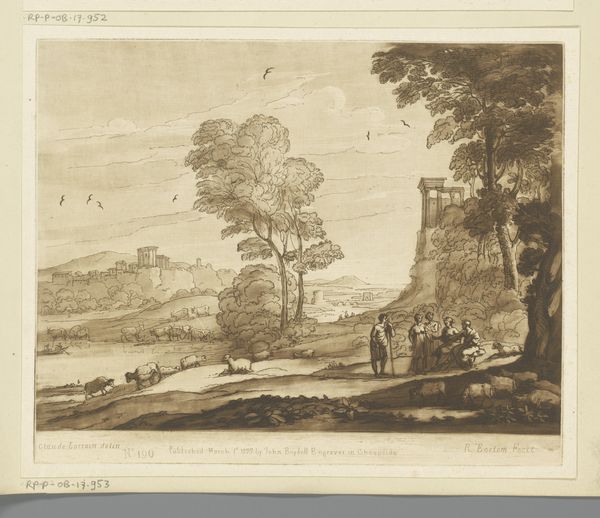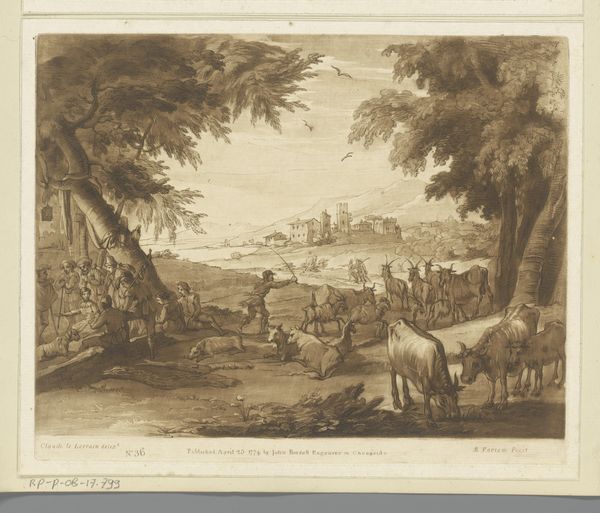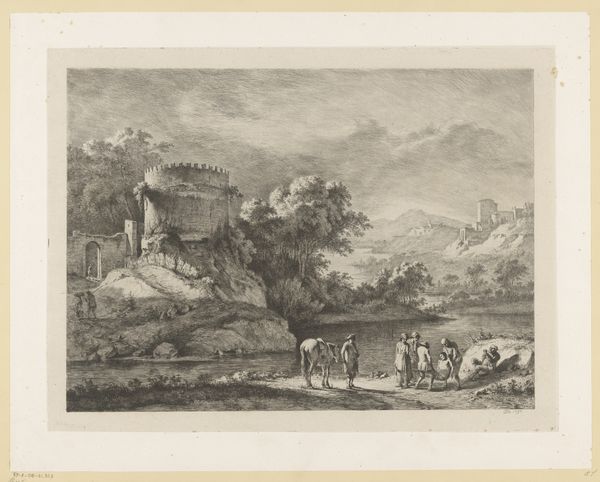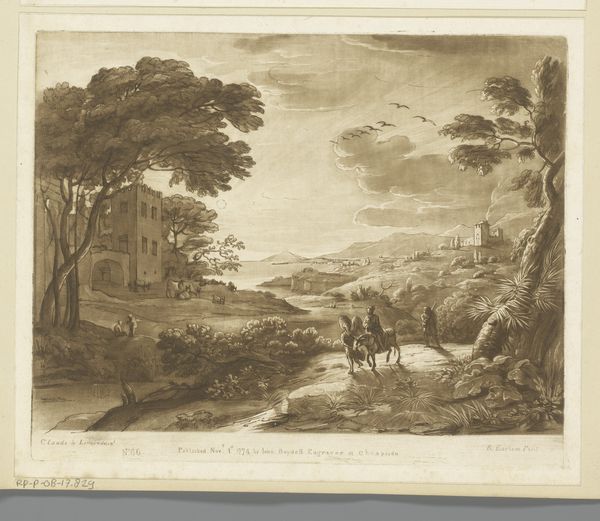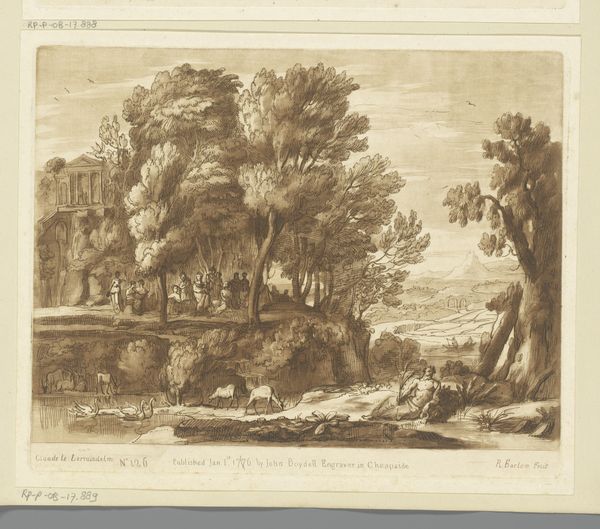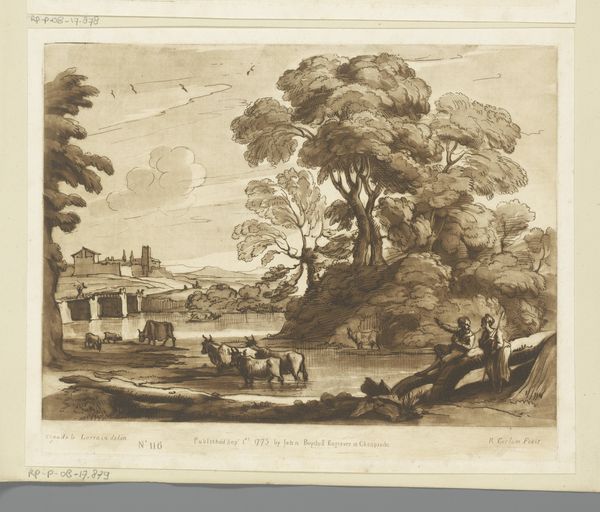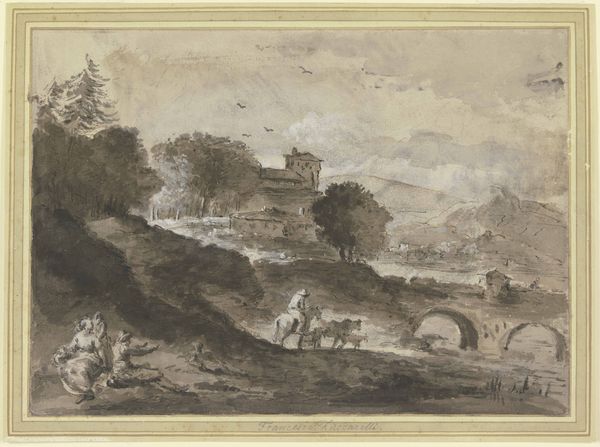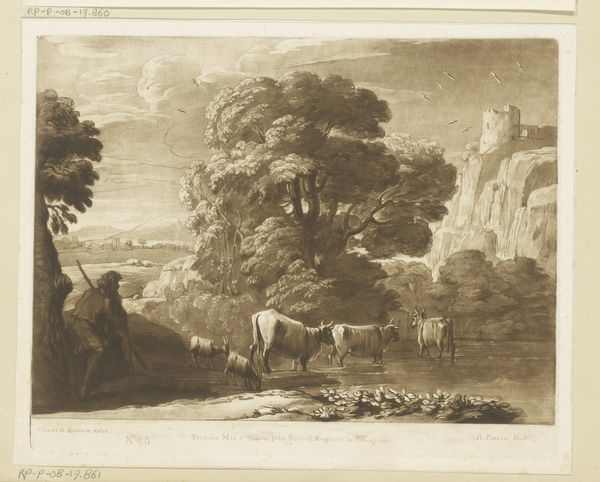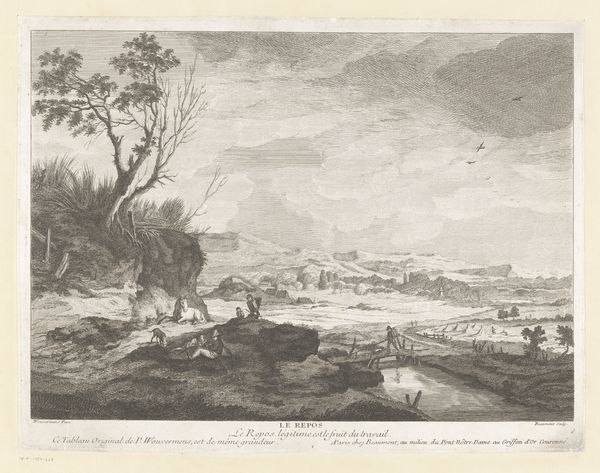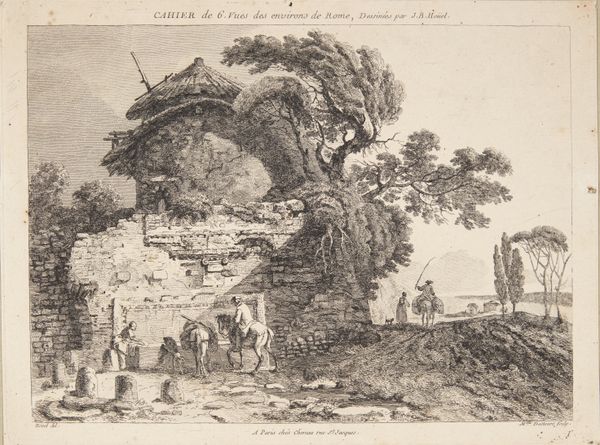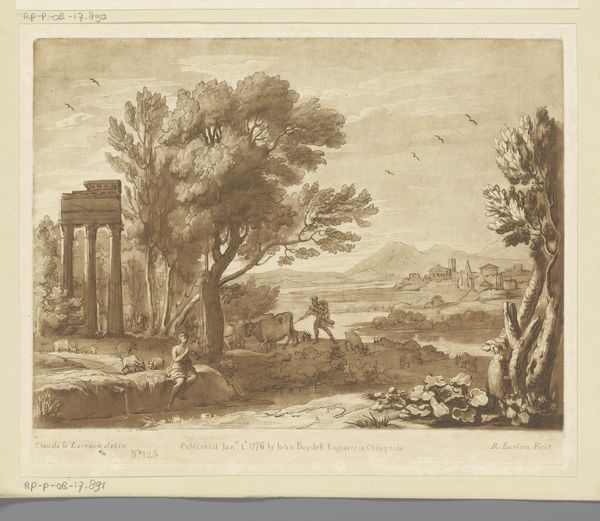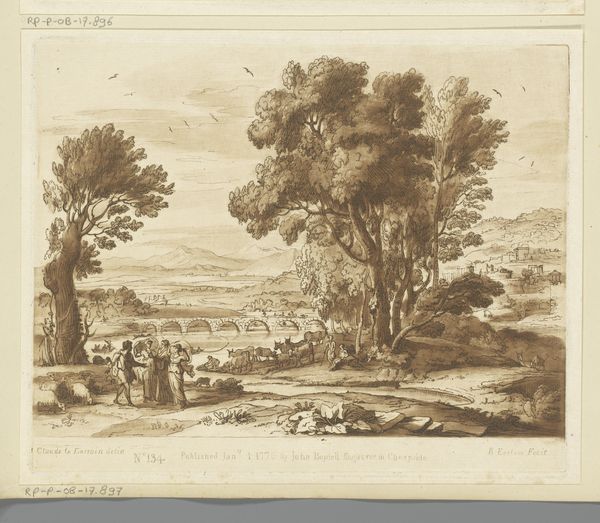
Dimensions: height 210 mm, width 256 mm
Copyright: Rijks Museum: Open Domain
Curator: Here we have Richard Earlom’s, Landschap met herders, vee en de Milvische brug, which translates to Landscape with Shepherds, Cattle, and the Milvian Bridge, possibly from 1775. It's currently held at the Rijksmuseum. Editor: Oh, instantly transporting. It's got this dreamy, sepia-toned wash, like an old photograph or a cherished memory. And that tree! So large, so expressive, bending and watching over the pastoral scene like a silent guardian. Curator: Absolutely! It's an engraving, which gives it a delicate, linear quality despite the scale of the composition. Notice how Earlom employs the baroque style. It’s about the drama, the interplay of light and shadow, drawing the eye to key features in this tableau. Editor: The light! Exactly, it really creates such a picturesque atmosphere, especially in the treatment of the water and those distant buildings near the bridge. It looks almost theatrical with all the movement in the arrangement, so you are guided to "discover" all the different parts of the painting... and the whole looks balanced. The bridge isn’t as impressive by comparison to that massive tree on the left, it would need more detail. Curator: It's intriguing that the print manages to balance realism with a sort of idealized vision of rural life. The inclusion of the Milvian Bridge, a recognizable Roman landmark, does subtly evoke the sense of history. A bit of romantic grandeur even within the rustic. Editor: A connection to antiquity! I love that. Makes you wonder what stories those shepherds are telling, what dreams they're dreaming under that watchful tree. The texture, even from afar, seems incredibly tactile—rough stone, soft wool, rippling water. There’s real sensuality there, wouldn’t you say? Curator: Without a doubt! It is designed to elicit such sensorial stimulation. I wonder about the audience of such prints during that time? What were they looking to gain from viewing this picturesque scene, devoid of much political or social commentary? Perhaps this romantic landscape was indeed escapism. Editor: Perhaps, or just a moment of quiet beauty appreciated for its own sake. Earlom gives a feeling of peace despite all the movement on the land. I really love that about this scene; so full but so quiet at the same time. Curator: It certainly asks us to pause, and that’s something in itself.
Comments
No comments
Be the first to comment and join the conversation on the ultimate creative platform.
